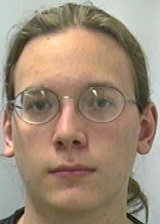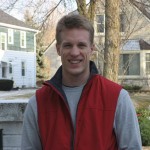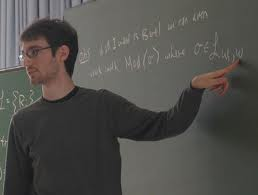I have served as a member of the dissertation or thesis committee for each the following students.
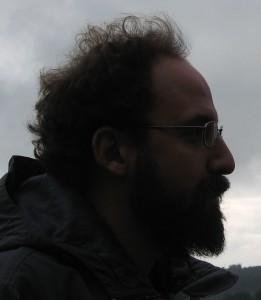 Konstantinos Tsaprounis, Ph.D. 2012, Universitat de Barcelona, Departament de Lògica, Història i Filosofia de la Ciència, Programa de doctorat de Lògica Pura i Aplicada, Facultat de Filosofia. Barcelona Research Group in Set Theory
Konstantinos Tsaprounis, Ph.D. 2012, Universitat de Barcelona, Departament de Lògica, Història i Filosofia de la Ciència, Programa de doctorat de Lògica Pura i Aplicada, Facultat de Filosofia. Barcelona Research Group in Set Theory
Director: Joan Bagaria i Pigrau
Dissertation: Large cardinals and resurrection axioms
In his dissertation, Kostas develops the theory of
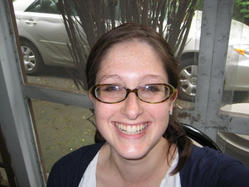
Shoshana Friedman, Ph.D. 2010, CUNY Graduate Center, math genealogy | MathSciNet
Supervisor: Arthur W. Apter
Dissertation: Aspects of supercompactness, HOD and set-theoretic geology
Abstract. In this thesis, we study HOD, primarily in the context of large cardinals and GCH. Chapter 1 contains our introductory comments and preliminary remarks. In Chapter 2, we extend a property of HOD-supercompactness due to Sargsyan to various models of set theory containing supercompact cardinals. In doing so, we develop a new method for coding sets while preserving GCH. In Chapter 3, we extend this alternative method of coding. This allows us to produce models of V = HOD and GCH in the presence of large cardinals (including supercompact cardinals). In the remaining chapters, we use this coding to extend a variety of earlier results. In Chapter 4, we generalize theorems about the Ground Axiom to models with supercompact cardinals that satisfy GCH. In Chapter 5, we extend results in set theoretic geology to models that satisfy GCH. Finally, in Chapter 6, we use the coding to produce a model of the Wholeness Axiom, V = HOD and GCH.
Paul Ellis, Ph.D. 2009, Rutgers University, math genealogy | MathSciNet
Supervisor: Simon Thomas
Dissertation: The classification problem for finite rank dimension groups
Abstract. There has been much work done in the study of the Borel complexity of various naturally occurring classification problems. In particular, Hjorth and Thomas have shown that the Borel complexity of the classification problem for torsion-free abelian groups of finite rank increases strictly with rank. In this thesis, we extend this result to dimension groups of finite rank. As these groups are naturally characterized by Bratteli diagrams, we obtain a similar theorem for Bratteli diagrams. We also obtain a similar result for a class of countable simple locally finite groups which are also characterized by Bratteli diagrams.
Scott Schneider, Ph.D. 2009, Rutgers University, math genealogy | MathSciNet
Supervisor: Simon Thomas
Dissertation: Borel superrigidity for actions of low rank lattices
Abstract. A major recent theme in Descriptive Set Theory has been the study of countable Borel equivalence relations on standard Borel spaces, including their structure under the partial ordering of Borel reducibility. We shall contribute to this study by proving Borel incomparability results for the orbit equivalence relations arising from Bernoulli, profinite, and linear actions of certain subgroups of
Specifically, using Zimmer’s cocycle superrigidity theorems, we will prove Borel superrigidity results for suitably chosen actions of groups of the form
Sam Coskey, Ph.D. 2008, Rutgers University, math genealogy | MathSciNet
Supervisor: Simon Thomas
Dissertation: Descriptive aspects of torsion-free abelian groups
Abstract. In recent years, a major theme in descriptive set theory has been the study of the Borel complexity of naturally occurring classification problems. For example, Hjorth and Thomas have shown that the Borel complexity of the isomorphism problem for the torsion-free abelian groups of rank
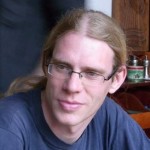 Joost Winter, M.Sc. 2007, Universiteit van Amsterdam
Joost Winter, M.Sc. 2007, Universiteit van Amsterdam
Supervisor: Benedikt Löwe
M.Sc. thesis: Space compexity in infinite time Turing machines pdf
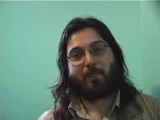 Can Baskent, M.Sc. 2007, Universiteit van Amsterdam
Can Baskent, M.Sc. 2007, Universiteit van Amsterdam
Supervisor: Benedikt Löwe
M.Sc. Thesis: Topics in subset space logic
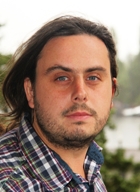
Yurii Khomskii, M.Sc. 2007, Universiteit van Amsterdam
Supervisor: Benedikt Löwe
M.Sc. Thesis: Regularity properties and determinacy
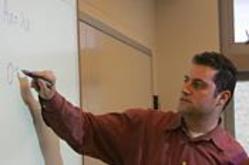 Erez Shochat, Ph.D. 2006, CUNY Graduate Center, math genealogy | MathSciNet
Erez Shochat, Ph.D. 2006, CUNY Graduate Center, math genealogy | MathSciNet
Supervisor: Roman Kossak
Dissertation: Countable short recursively saturated models of arithemtic
Abstract. Short recursively saturated models of arithmetic are exactly the elementary initial segments of recursively saturated models of arithmetic. Since any countable recursively saturated model of arithmetic has continuum many elementary initial segments which are already recursively saturated, we turn our attention to the (countably many) initial segments which are not recursively saturated. We first look at properties of countable short recursively saturated models of arithmetic and show that although these models cannot be cofinally resplendent (an expandability property slightly weaker than resplendency), these models have non-definable expansions which are still short recursively saturated.
 Federico Marulanda Rey, Ph.D. 2007, Columbia University, DBLP | Proquest | Google Books
Federico Marulanda Rey, Ph.D. 2007, Columbia University, DBLP | Proquest | Google Books
Supervisor: Haim Gaifman (I was the outside reader)
Dissertation: Contradiction, Paraconsistency, and Dialetheism
Abstract. The deductive closure of a set of sentences is trivial, i.e., it includes every well-formed sentence, if this set contains a contradiction and the consequence relation employed is either classical or intuitionistic. Over the past few decades, a number of paraconsistent logics, or logics specifically designed not to trivialize inconsistent theories, have been developed. The present work investigates philosophical issues arising from the development of paraconsistent formal systems. In the introductory chapter, as well as on a chapter that extracts learnings from Wittgenstein’s career-long preoccupation with contradiction, I endeavor to determine just what is the problem with contradictions, as they arise in both natural and formal languages. I then consider in detail two kinds of paraconsistent logic: their formal characteristics, the motivation for their formulation, their possible applications, and objections that may be raised against them. Special attention is devoted to a logical system that deliberately permits the evaluation of certain contradictions as being true, as well as to the attendant philosophical position, known as dialetheism, according to which there are, in fact, true contradictions. I raise a number of objections to this strong (and resilient) form of paraconsisteney, which, taken together, constitute a rebuttal of the view, thus carrying out a task that a number of authors have signaled as pressing, but which has not so far been undertaken in detail in the literature.
Ivan Welty, Ph.D. 2006, Columbia University, Philpapers | Google Books
Supervisor: Haim Gaifman
Dissertation: Frege Against Hilbert on the Foundations of Geometry
Abstract. This dissertation is a close study of the Frege-Hilbert dispute over the foundations of geometry. The dispute has been the subject of active debate recently, with opinion divided as to the merits of Frege’s position. In this dissertation I aim at a comprehensive assessment of Frege’s position, its motivations, and its major consequences. I find that: (1) Frege’s objections to Hilbert’s Foundations of Geometry do not represent a mere misunderstanding of Hilbert’s work, but stem from considerations of serious philosophical interest; (2) The same considerations that motivated Frege’s objections suggest a conception of geometry—and a reading of the history of geometry—radically different from Hilbert’s; (3) That conception of geometry—and reading of the history of geometry—are not obviously wrong, and indeed merit further investigation; (4) Part of Frege’s objection to Hilbert’s Foundations is that he gives no philosophical analysis of geometry, analogous to Frege’s analysis of number in Foundations of Arithmetic; (5) The basic framework for such an analysis can be found in Frege’s philosophical work, although it is far from obvious whether and how it can be carried through. The principal contributions of this dissertation lie in its clarification of the import of the Frege-Hilbert dispute for our understanding of the history of geometry, in particular the emergence of non-Euclidean and projective geometries; in its clarification of Frege’s objections to Hilbert’s independence proofs; and in its outline of a Fregean analysis of geometry, analogous to the analysis of number in Foundations of Arithmetic.
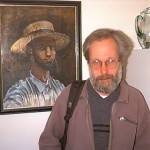 Sidney Raffer, Ph.D. 1999, CUNY Graduate Center
Sidney Raffer, Ph.D. 1999, CUNY Graduate Center
Supervisor: Roman Kossak
Dissertation: Some Diophantine properties of ordered polynomial rings

